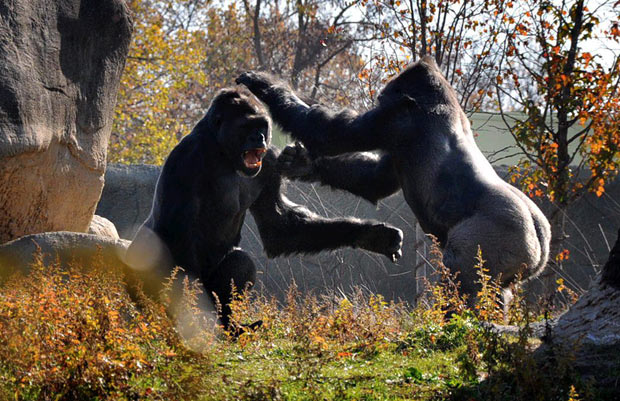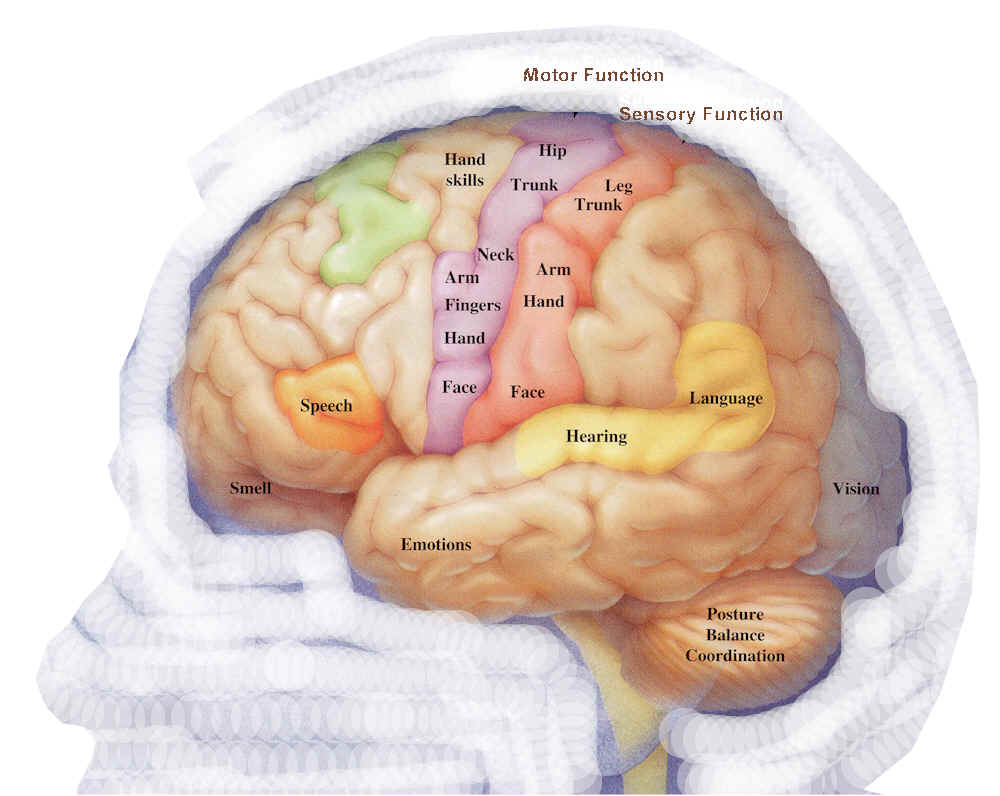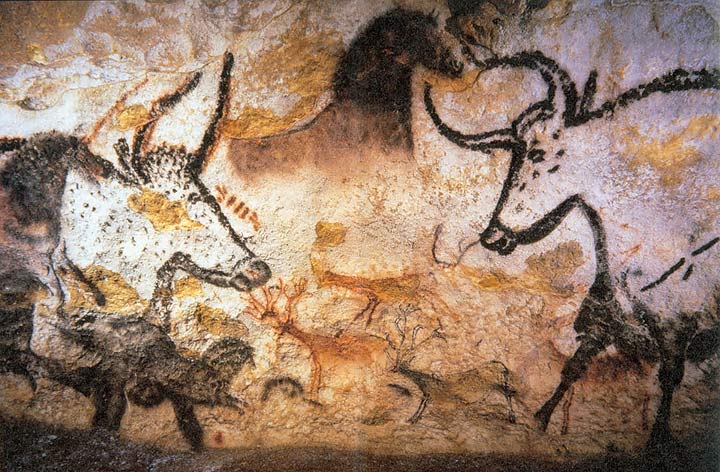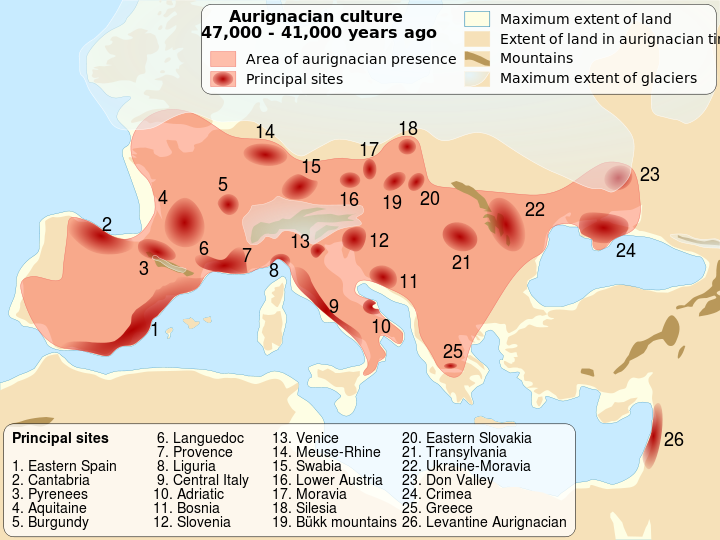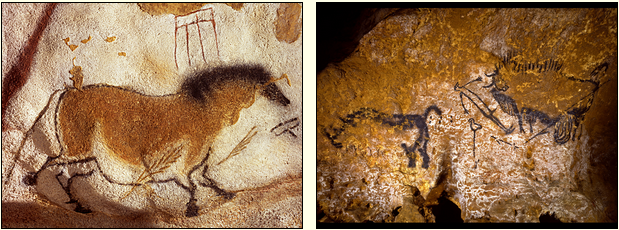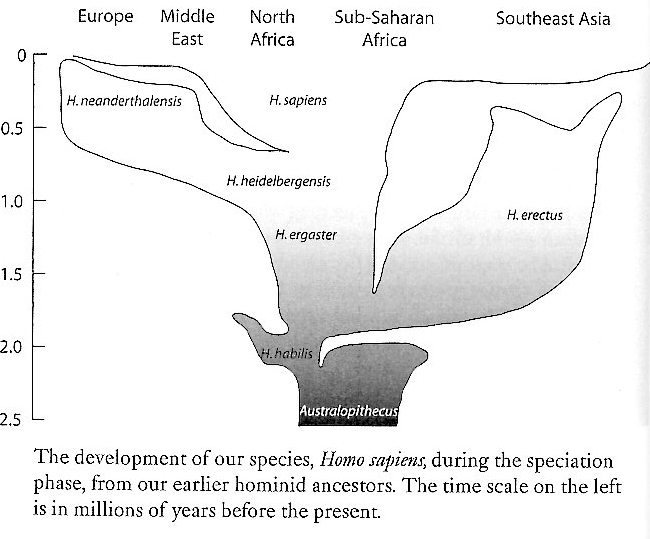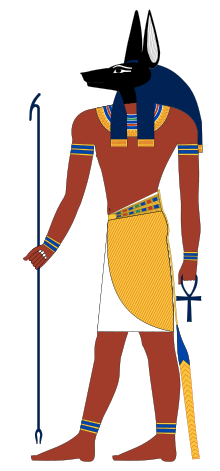Our story
This Chapter
Up from old psychology
What you don't know can hurt you
Bizarre gossip and junk food
Social stratification
Evolutionary psychology
"Mind is what brain does"
Behavioral modernity
Cultural evolution
From chip to chip
The almighty symbol
Bibliography
As time goes by
Footnotes
|
|
'Tis hard to say, if greater Want of Skill We are all ignorant, but on different subjects February 3, 2015 Beneath new culture is old psychology. This the title of a piece by evolutionary psychologist Jerome Barkow published way back in 1992; more than 20 years ago. In this day and age of fresh scientific insights ever rapidly coming about, this is a long span of time and it takes experts of having any chance of keeping up to scratch. So, I better be mindful of Pope's adage: fools rush in where angels fear to tread! 3 Old psychology has come about in evolutionary stages, from animals to people, up to our latest version, Homo sapiens sapiens, who evolved about 100,000 years ago, maybe much earlier. For some detail, see the appended As time goes by 4 Barkow's contribution has a subtitle: Gossip and social stratification. Although much of today's society publicly frowns upon gossip, we nevertheless listen to it, and for good treason. If no one tells you the gossip, you are an outsider, and what you don't know can hurt you. It is through gossip that we adhere closely to social norms. Other people's casual conversation affects our relative standing and acceptability as mate and as a partner in all sorts of social interactions, getting a job for one. 5 But gossip, Barkow wrote, has acquired something quite bizarre about it. Gossip is no longer solely about real people, people we know personally or know about from others we do know. Much gossip is now about people we don't know at all and are not likely to ever meet; even about people who do not exist. Our "knowledge" about them may have been deliberately spread or fabricated by people who made it their business to do so: journalists, authors of biographies and fiction, actors of stage and television, people seeking jobs, political propagandists, folk working in advertising and public relations. Since time immemorial, gossip has become the stuff of entertainment. 7 There is little doubt that our old psychology includes the ability to predict, to discriminate, to influence the behavior of others: in particular relatives, rivals, mates, offspring, friends and acquaintances, those up and down from us on the social ladder. We should be especially interested in those of their activities most likely to affect our own wellbeing as member of society. Our ancestors, and probably most of us today, were and are quite interested in the sexual exploits of others. In terms of adapted behaviour, we don't give a hoot about how soundly someone sleeps—knowledge hardly relevant to our social fitness—but many of us are keenly interested in hearing the gossip about who he or she is sleeping with. 8 Why is it that we do gossip about total strangers and fictitional characters? A possible answer, Barkow suggested, is that this more bizarre kind of gossip came about as a kind of byproduct in the evolutionary created essential part, the part that makes us fit to strive among humans. The media, he suggested, may mimic the psychological cues that would have been triggered by the environment way back some 100,000 or more years ago. Our unconscious selves may mistake such strangers as seen on our television screens as important fellow members in everyday society, or, as did our ancestors way back, as members of some band to which they used to belong. Taking things a step further, a comparison of the junk-food industry with mass media suggests that our evolved strong preferences for salt, sugar and fat—items only scarcely available to our ancestors way-back and therefore appearing valuable—provided an opportunity to influence our buying behavior, to fatten junk-food purveyors' bottom lines by fattening the bottoms of their loyal clientele. 9 On to Barkow's other topic: social stratification. Meant hereby is, in the language of a social scientist, unequal access to the basic resources that sustain life. Well, we are seeing much of that today. A recent prediction is that in the foreseeable future one percent of all people will own half the world's entire wealth. 10 Social stratification appears to have come about pretty late in the 100,000-year existence of Homo sapiens sapiens. Needed for that to come about is a sufficiently large-scale society to produce a surplus to support craftsman, military, rulers and their bureaucrats. Agrculture and the capability to hold food in long-term storage provide that. That'is why social stratification strongly developed around rivers that made lands fertile: the Yangtse and Yellow rivers in China (where agriculture has been practiced since roughly 7500 B.C.), the Euphrates and Tigris in Mesopotamia (roughly 7000 B.C.), the Nile in Egypt (roughly 5500 B.C.), the Indus in Pakistan/India (3300 B.C. about). Wrote our Greek "father of history," Herodotus, in the fifth century B.C., "Egypt is a land won by the Egyptians and given them by the Nile." It is the craftsmen then who made superior tools for agriculture; it is the military that defended agricultural settlements against invaders on the prowl for booty; it is the ruling class to organize it all in a workable whole, notably by having work done on irrigation canals, but also extracting a heavy toll for themselves and their entourage—and readily using the military to maintain or expand their dominance. 11 The psychological traits underneath social stratification include the pursuit of high social rank (control, power), nepotism, and superior persuave skills. The pursuit of controlling power began even before man first evolved some 2.5 million years ago. We know this because it is also found among human beings' evolutionary companions, the great apes, in the selection of mates. Favoring one's kind, too, is not unique to humans. Although nepotism is frowned upon in modern Western society not favoring one's kin is considered highly unethical elsewhere. (But then again, Western mores and law support the inheritance of parental wealth by offspring—yes after taxes.) 13 Charles Darwin (1809–1882) proposed that humans have social instincts that evolved by natural selection. Today we may refer to those as the root of evolutionary psychology, a term popularized by Jerome Barkow and others in their 1992 book The adapted mind: Evolutionary psychology and the generation of culture. This book, much criticised at first, has since gained in overall acceptance. Evolutionary psychologists argue that our our biological makeup has a major influence over the way we think. They think of the mind as being a composite of specialized processes, each dedicated to a specific type of behavior, such as gossiping. It has been argued that our gossiping is akin to grooming among the great apes, that, in fact, it developed from it along with our mother tongue, learned from those who nurtured us and we grew up among. 14 Those specialized processes have their own subprocesses. For example, details of our social interactions might have a module for detecting cheating, a module for remembering experiences we have with somebody else, etc., etc. I imagine that those subprocesses have their own subsubprocesses as well, and so on. The book raises a problem when two processes lead to conflicting conclusions. How then will we behave? As an example, the cheating detection module concludes someone is cheating on us whereas the history module holds that we have an excellent experience with that same person. If the cheating module erred, we are about to break a beautiful friendship; if the history module erred, we need face all sorts of eventualities. One stopgap is for the history module to just keep silent for at least the time being, i.o.w. to repress the output of the cheating detection module. Again, this insight is more than two decades old, but it is the kind of puzzle cognitive scientists have been chipping away at, fortunately with help from the neuroscientists and their miraculous brain-scanning tools. They, too, describe the brain as a collection of modules, but modules of the cortical brain being quite plastic, meaning modules that may help out where more specialized modules have failed for some reason. 16 Students of the mind and students of the brain have come together and thus we see, in short, that mind is what brain does. Actually, mind is considered more than just that, but never mind.* Let's instead move on from psychology to archeology and see what that discipline has brought to light. Archeologists try to draw conclusions from what they have dug up from the earth, bones and manufactured objects, things that can be seen, touched, subjected to physical and chemical analyses in the laboratory, and compared with one another. From that they try to fathom the workings of the minds that left all this stuff. In the section Time flies we find some background of how humans have been classified by species as evidenced by the bones dug up. In the following paragraphs we consider things found and conclusions drawn from them. 17 The first kind of manufactured items were stone tools, especially for hunting. Those have been associated with humans who existed already millions of years before Homon sapiens sapiens saw the light, and the way they were made did not change appreciably for a long, long time; not even among those early humans who were anatomically very much alike us. Then things were found indicating that some 40,000 years ago, people became capable of producing higher qualities of stone tools, of fishing, of moving stuff over long distances, of making ornaments for themselves, of creating various forms of art from carvings on bone to making figurines and even music, of playing games, of cooking, of burying their dead. People began to behave in ways much like we do. In other words, they were using their brains in more advanced ways and it is from what they left for archeologists to study came insights in mental changes that happened. The term behavioral modernity is used to tell apart such capable people from those living before them. Behavioral modernity became the stuff from which scientists gathered insights about thought before written records were made and in recent times have been found, studied, deciphered. The body of knowledge thus gained by scientists is the main subject of what is now labelled prehistory of mind. It is in the history of mind where the roots for why we think and behave we do are to be found. That is why our story of the Merckelbachs needed to step back hundreds of thousands of years before there was a Reinard Huyn van Anstenrade who changed his name to Reinard van Merkelbeek. 18 As it turned out from finds made in South Africa during the last decade, behavioral modernity goes back much further than 40,000 years as we mentioned a moment ago. Ornamental shells found there have been dated back some 77,000 years, a burial place back 90,000 years, pigment has been used for more than 100,000 years. Moreover similar finds made elsewhere take us back even further; a set of fine hunting spears found in a German mine known as Schöningen are more than 300,000 years old, predating the evolution of Homo sapiens. Making such tools for the hunt shows that an earlier human species than ours worked to a purpose, were thinking ahead.* Moreover, it is unlikely that those people could successfully hunt quickly fleeing game without having sophisticated hunting strategies, a complex social structure and developed forms of communication; not likely language as we know it, but some sort of language ability nevertheless (but then again, wolves have hunting strategies, too.*) 42 There are aspects of culture found among peoples around the globe, so-called cultural universals. Such are language, religion, use of pigments (such as ochre), art, dance, singing, music, myth, cooking, games, and jokes. I might include leadership as well. And because they are universal, their evolution from human genetic makeup must have happened in Africa, that is before there were people who left that continent and whence their fruits are found among peoples throughout the world, including those in isolated places.* 21 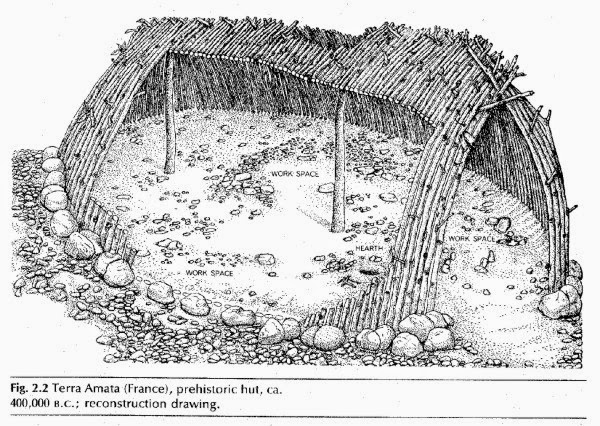 Drawing of the structure at Terra Amata in France, made by Homo Heidelbergensis* around 400,000–200,000 years ago. A similar structure, made by Homo Erectus around 500,000 years ago, was found near Tokyo, Japan. (Source.) 22 Two competing theories try to explain behavioral modernity. One supposes a "great leap forward," possibly the outcome of a major genetic mutation of a biological reorganization of the brain that led to the emergence of modern human natural languages. The other that instead of such suddenness, it is the result of a gradual development of knowledge, skills and culture over hundreds of thousands of years. It goes by the name continuity hypothesis. The finds in South Africa shifted favor toward the latter, obviously. 23 Homo sapiens sapiens, our latest evolutionary stage, has been around for some 100,000–150,000 years and, yet, mankind has undergone substantial change. Yes, evolution is still happening—and eventually is expected to result in a species that succeeds ours—but at a snail's pace in comparison with what has been named cultural evolution. When people from our species came out of Africa, some 60,000 years ago, we were all the same. Newborns today do not differ much from newborns of 60,000 years ago but for some minor characteristics such as in outward appearances. For example, all were and are still born with an instinct for language, not with language as we know it. It is only after birth that babies develop along different trajectories thereby learning different languages, acquiring different habits, beliefs, what-have-you, all leading to vastly different cultures around the world. One of the most fascinating of those cultures is that of Cro Magnon Man. (These days, scientists prefer the term European early modern humans because, unlike the Neanderthalers, the Cro Magnon are not perceived as a species independent from Homo sapiens sapiens.) Radiocarbon dating shows the earliest Cro Magnon found thus far living about 43,000 years ago. 25 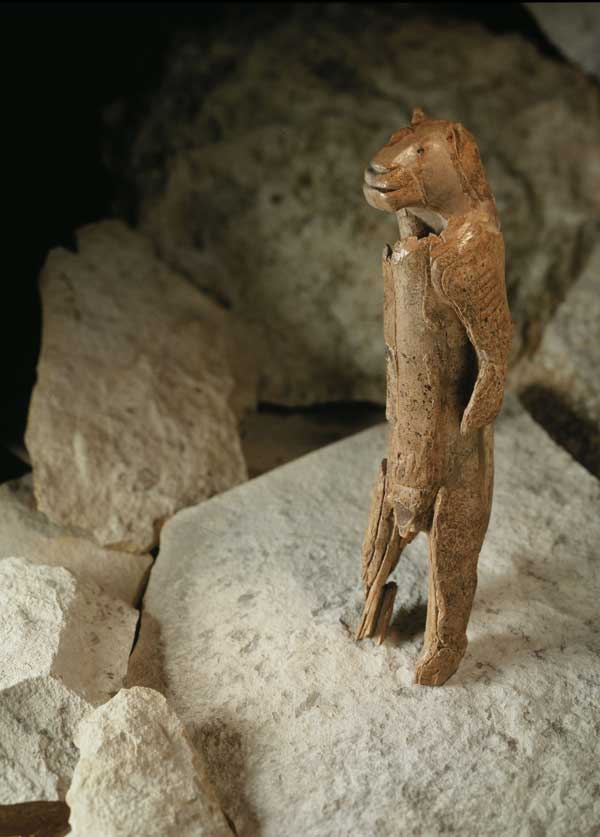 A replica of "Lion Man," found in a cave in southern Germany and dated at 40,000 years old. It is the oldest known anthropomorphic animal figurine in the world.* (Source.) 26 Originally, it was only the people who left behind the famous cave paintings found in caves near Lascaux, France, and some other caves in southern France and northern Spain who were referred to as Cro Magnon. (I understand that the name Cro Magnon comes from the word hole or cave plus the name of the man on whose property the cave is located, Monsieux Magnon.) But although those paintings are a unique aspect, their culture, labelled Aurignacian, had become rather advanced in other ways as well. The Aurignacian tool industry is characterized by worked bone or antler points with grooves cut in the bottom. Their flint tools include fine blades and bladelets struck from prepared cores rather than using crude flakes. The people of this culture also produced some of the earliest known cave art, such as the animal engravings at Aldène and the paintings at Chauvet cave in southern France which are older than those near Lascaux. They also made pendants, bracelets and ivory beads, bone flutes, and three-dimensional figurines. The oldest musical instrument ever found is a flute made from a vulture's wing, having five holes for fingering.* Perforated rods, thought to be spear throwers or shaft wrenches, have aso been found at their sites. 27 Merlin Donald in Origins of the modern mind (1991) outlined stages in human development, gradually morphing one into the other. Their labels are a little forbidding, but we'll just put up with them. Here goes, stage by stage: 29 1. An episodic stage, meaning loosely connected parts or events. This stage is characteristic of primate cognition as judged by observing the behavior of great apes today. Their psychology is stimulus-reactive. Holding one's own in groups calls for a fair amount of social intelligence. 30 2. A mimetic stage, a long stretch, beginning about 4,000,000 years ago and continuing to some 400,000 years ago. It is the period of early tool production and use, with skills passed on by mimicking, probably facilitated by non-verbal communication. 31 3. A mythic stage, peaking when Homo sapiens entered the world stage and still ongoing while other stages have begun to phase in. I is the stage of complex language skills and narrative thought. 32  Inukshuk. An Inuit word in which "inuk" means "human being" and "shuk" "a thing that resembles." An inukshuk is a material symbol that identifies a location. (Photo by Rolf Hickler.) 33 4. A stage accepted by Donald when proposed by others, the material symbolic stage. That is a mouthful. It emphasizes material goods serving as symbols, and when constructed monuments play an important role. We'll get into that. This stage began about the time of the agricultural revolution. 34 5. And, finally, a theoretic stage, characterized by what was termed institutionalised, paradigmatic thought, i.e. fixed lines of thought controlled by established, all-around accepted practices. This stage began with the invention of writing permitting massive memory storage outside our brains. Digital technology, of course, is accelerating the process. The material symbolic stage is very much a part of this fifth stage, even more evidently so (letters, math symbols, road signs, the stuff of computer script, and so on, and so forth. 35 Human culture is wrapped around the use of symbols, be they words or material objects. These symbols point to what we encounter in our environment, in short: It seems to me that symbols already played a role well before the agricultural revolution. Consider the Lion-man shown above, by his stance obviously a man, by his features an animal. The artist must have had something in mind, something represented by his statue. Our guess, of course, is something spiritual, but we don't know just what; C (context) is missing! If we look at Cro Magnon's cave art, we have something here that many today interpret as things spiritual, others as pointers to good hunting practice. Consider the images below: 37
The captions are condensed versions of those on the official Lascaux-culture website. There are people who consider the cave images of spiritual significance; others perceive them as a manual for hunters. I wonder if, in the absence of other suitable means of communication, they were merely meant to record the artists' observations. Karen Armstrong, former nun and Oxford scholar, whom we shall meet in Chapter 12, points out a close, spiritual connection that may exist between hunter and hunted, the hunter being thankful for the hunted's sacrifice. To me, the man's head resembles that of a bird, something that, to me, is reminiscent of the ancient Egyptian conductor of souls, Anubis.* Yes, speculation comes easy! 39 Turning our attention back to symbols in relation to the advent of agriculture, agriculture does not allow people to roam far from home, they needed to settle down. And so, they made immovable dwellings, formed villages, developed crafts to improve their tools which nomads are not in a position to do, practiced metallury, went from bronze to iron. From hunting and making some hunting tools, humans's productive activities multiplied and social structures developed, and so on. Visible symbols marked people's place in the scheme of things: symbols identifying rulers, symbols identifying value and weight. Verbal and material symbols identified social realities such as marriage, kinship, property, debt, custom, law, religious practices. Then came writing, which took us from the darkness of prehistory into the light of history. 40 Bibliography
|
|
A better aphorism would be "mind is what the neural system does" and this might be further improved upon by "mind is what the neural system controls." For example a potter's mind controls his movements, his potter's wheel and even his clay by its very shaping. Going further still, cooperation involves people to be, at least in part of their mental functioning, of one mind. And so forth. * fn1 This does not mean, of course, that everybody was an inventor! A general population only need be able to adopt an invention. * fn2 Wolf packs' hunting strategies shown on Youtube. * fn3 Some one and a half million years earlier, people from the species Homo erectus migrated to South-East Asia. Remains have been found dating as late as 30,000 years ago. * fn4 Homo heidelbergensis comes under H. erectus (as do H. georgicus, H. ergaster, H. pekinensis). New finds ... new hypotheses ... new claasifications; no end to science. * fn5 Conservators experimented by making a replica of Lion Man, and calculated that it would take a highly skilled carver at least 400 hours using flint tools (two months’ work in daylight). This means that the carver would have had to be looked after by hunter-gatherers, which presupposes a degree of social organisation. There is an ongoing debate on what the Lion Man represents, and whether it is linked to shamanism and the spirit world. (From The Art Newspaper. * fn6 Wulf Hein, an "experimental archeologist," plays a replica of the Hohle Fells flute on Youtube. * fn8 |
--
| top of page |
|
Page maintenance:
Page format:monh xx, 2015
Story edit:
To be checked for timeliness:
¶ none
Reminders:
¶ none
Linkcheck: not done
XHTML verify: April 7, 2015
Backups: month. 25, 2011


